Graphics
Graphic services include Graphic Design, Illustration, Animation, Motion Graphics, Photography and 3D Modeling.
Graphic Design
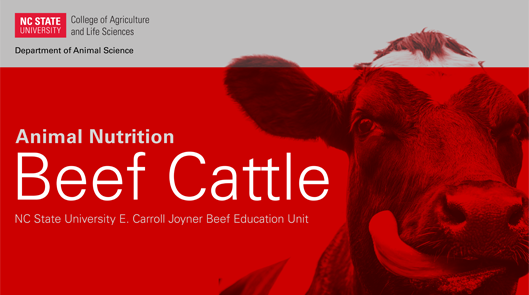
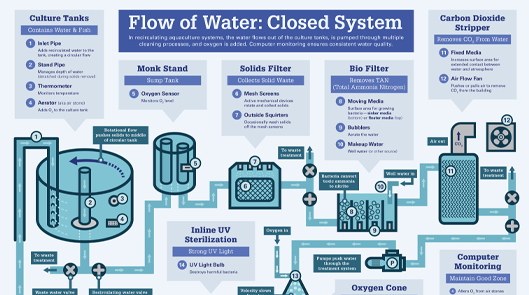
The images above are several examples of graphic design developed for recent DELTA projects. The left image is an example of altered photography and typography to give the viewer a sense of the topic and information to come. The image on the right is an example of illustration and typography used to describe a process.
Graphic Design is the process of problem-solving and communicating using typography, photography and illustration. DELTA presents ideas and messages by combining icons, images and text in a visual form. We take an instructional challenge, interpret the content and visualize it in a simple way to make it easier for a student to comprehend. Graphic design can also make information more appealing to an audience that is used to today’s sophisticated media. DELTA uses graphic design to convey complex information in an accessible, visually pleasing format.
Examples of DELTA graphic design include:
- CHE 596: Online Chemical Engineering Bridging Course
- PRT 266: Improving Online Student Success in Introduction to Sport Management
- NTR 301: Introduction to Human Nutrition
Illustration
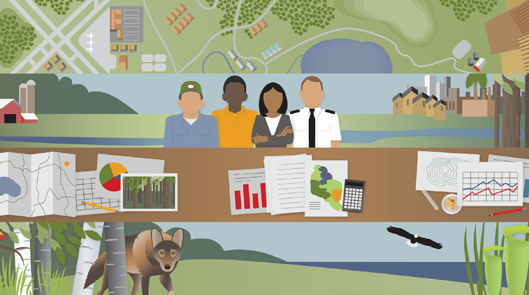

Left image is a compilation of four illustrated graphics used inside the learning management system to introduce modules. The illustration on the right was developed as part of a course project.
Illustration is used to visualize an idea or concept. It is used to create icons used in infographics and images to tell a story or communicate a message. DELTA often uses illustration to present information in a different and appealing way, to help students understand abstract ideas and to help reinforce concepts. The more unique the image, the more likely the viewer will be engaged. DELTA’s goal is to find the balance between engaging and functional. Most of our illustration work is created digitally with the use of programs such as Adobe Illustrator and Photoshop. Illustrating concepts also benefits visual learners and others who learn best when the instructional material is delivered in a variety of ways (beyond text and lecture).
Examples of DELTA illustrations include:
- MBA 511: Data Security and Privacy
- NTR 301: Introduction to Human Nutrition
- Enhancing the Standard Textbook in GD 303 with Augmented Reality App
Animation
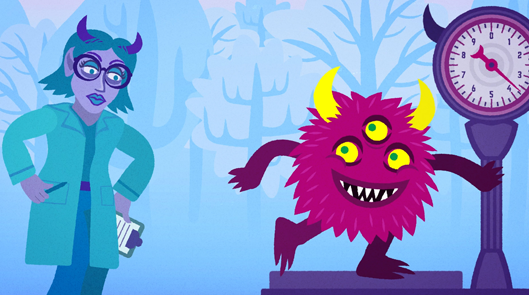
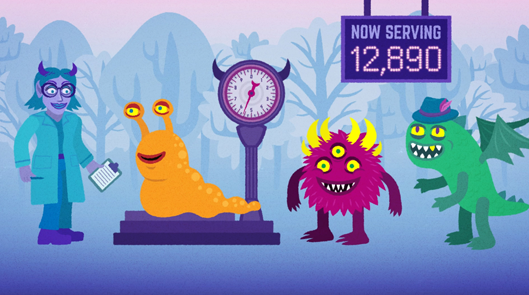
Animations are used to explain concepts that are sometimes difficult to understand through moving graphics. Both of the images above are still shots from an an animation created for a statistics course.
Animation is a moving illustration or graphic. An animation can be character-based, text-based or a combination. The style can vary from semi-realistic to completely unique and can be developed in 2D or 3D depending on the needs of the educational challenge. An animation is invaluable when it comes to communicating the complex. The complexity of subjects may arise due to the involvement of abstract concepts or the need to use one’s imagination. They also seem ideally suited to the teaching of processes and procedures. They help us show and generate interest in something that may not be naturally engaging, so it can be fun and informative at the same time. It’s sometimes difficult describing motion, processes, or cause and effect with text or a still image. DELTA uses animation to bring the subject to life and tell some stories more effectively.
Examples of DELTA animation include:
- Monster Scarelines for Introductory Statistics
- FM 480: An Inside Look at Feed Milling with Augmented Reality
- ANS 110: Introduction to Equine Science and “Trot to Trophy”
Motion Graphics
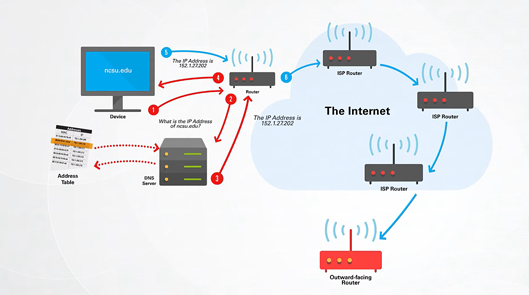

Motion graphics, like the two examples pictured above, can break down complicated systems to present them in a way to enhance retention of the idea.
DELTA uses the versatile term “motion graphics” to describe the use of text and graphics (words, letters, shapes or artistic elements) in conjunction with video. They provide an opportunity to layer instructional content and reinforce important concepts. Motion Graphics can be a great bridge between content students view online or on TV and purposeful educational content. [link to Video Section] While animation can be described as moving illustration, motion graphics can be thought of as moving graphic design. In most cases motion graphics are used to enhance video by adding graphic elements which provide supplemental information.
Examples of DELTA motion graphics include:
- Neuron to Neuron: Normal and Toxic Actions
- Applying Theory to Practice: CSC 316 Data Structures for Computer Scientists
- CH 224: Increasing Organic Chemistry Representational Competence and Reinforcing NMR Concepts Through Augmented Reality
Photography
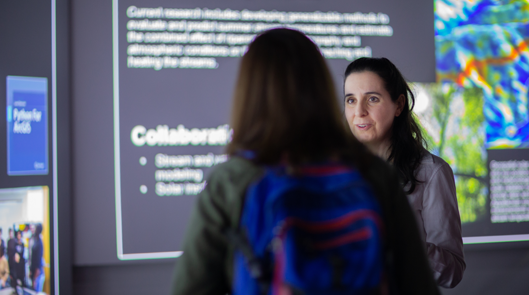

Photos can tell a story and serve as a useful documentation source for events. These photos were taken at a project review during a GIST symposium.
Photography is a powerful tool to define, educate, and inform applications for multimedia and visual communications strategies. DELTA uses photography to enhance modules and course activities, develop immersive experiences, and to document course production that goes on behind the scenes, as well as to document program events like symposiums and workshops. With photography, students can embark on educational tours, get up close with course materials and interact with content in meaningful ways. Like other forms of visual media, photography benefits visual learners and others who learn best when the instructional material is delivered in a variety of ways (beyond text and lecture).
Examples of DELTA photography include:
- MEA 110: Geolocation Technology in Place-Based Learning
- FM 425/525: Decision Tree for Model Feed Mill Development
- GlobalVR: Teaching Cultural Competencies Through Virtual Reality
3D Modelling
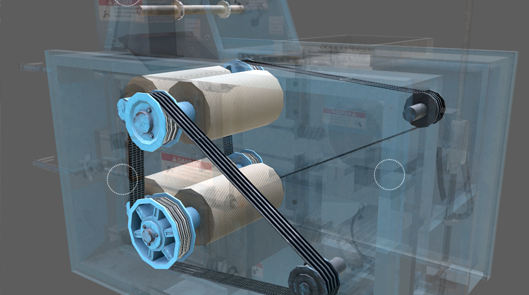
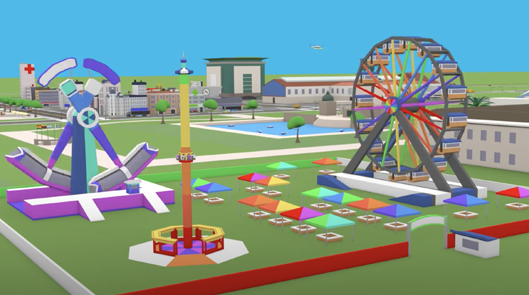
The images above show two different examples of 3D modeling. The picture on the left shows the inside workings of a piece of machinery. The image on the right shows a 3D environment.
3D modeling involves taking a real-world item and creating it in 3D so users can experience it in a digital environment. From the mundane to the impossible, anything you can imagine can be done in 3D while enhancing immersion, interactivity and exploration. 3D modeling allows students to study things in greater depth and detail than is possible in real life, emphasizing spatial relationships, how things move and their inner workings. 3D modeling is also a valuable tool for digital preservation; things can live forever in a 3D immersive space where you can replicate and manipulate weather, time period and lighting from multiple perspectives. DELTA has used 3D modeling to highlight the systems and functions of a feedmill, create accurate atomic models and illustrate 2D properties in a more impactful way.
Examples of DELTA 3D modeling include:
- DELTA Explores On-Location Photo Scanning
- Changing Sombreros: FLS 102 Needs a Makeover
- FM 480: An Inside Look at Feed Milling with Augmented Reality
Want to see more examples about the DELTA Graphics Services we offer?
Click below to see more examples of the graphic, video and interactive services we’ve provided to help enhance projects related to DELTA Grants as well as instructional consultations.
Looking for other Related Media Services?
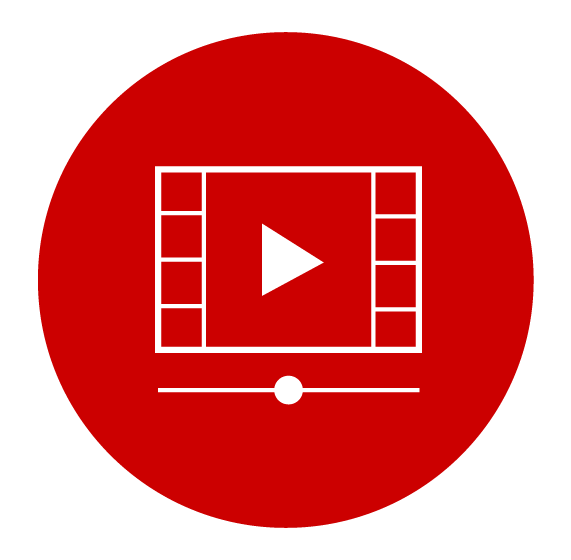
Video
Video services include producing, directing, writing, cinematography, audio production, lighting, coloring, post-production, remote live capture and streaming.
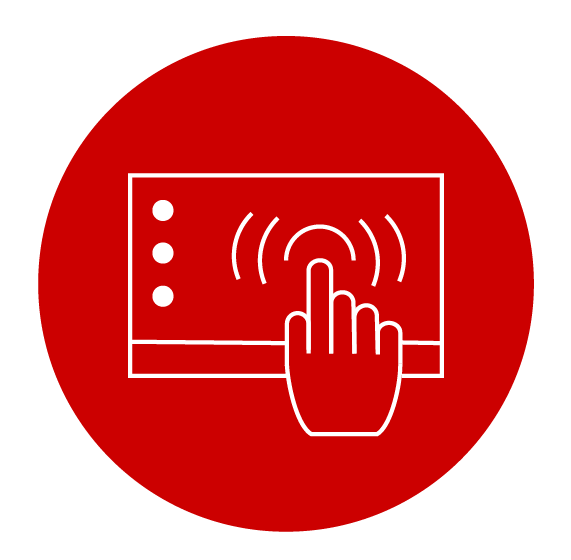
Interactive
This category includes web and mobile interactive, immersive media, 3D modeling, as well as integrations and custom applications support.
Reach Out to LearnTech
LearnTech is the answer source for all questions about NC State’s learning technologies. If you would like to consult with LearnTech about your project in order to gain more direction as to where to go, you can reach out to LearnTech by clicking on the following link.